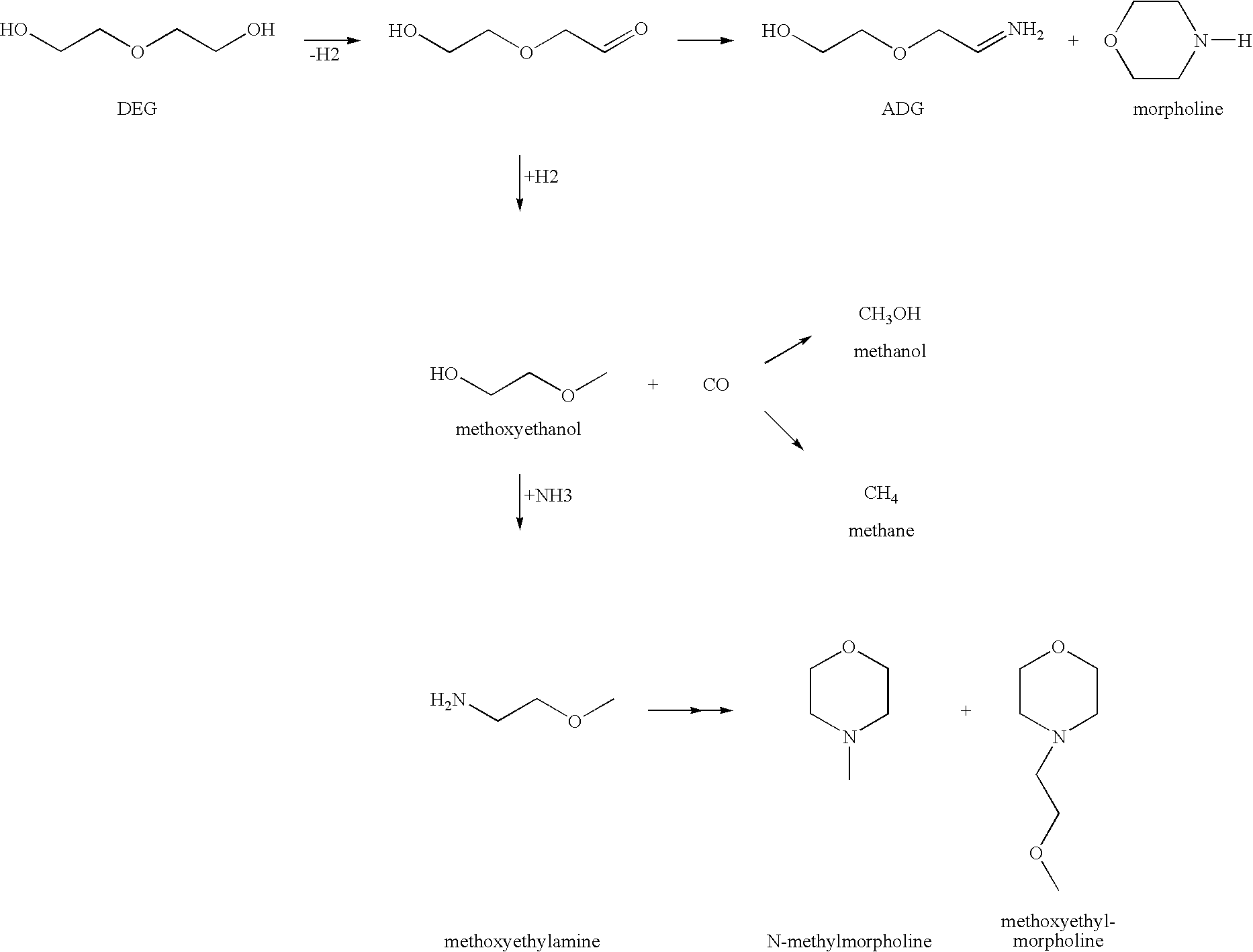Method for producing an amine
a technology of amine and amine, which is applied in the preparation of amino compounds, physical/chemical process catalysts, metal/metal-oxides/metal-hydroxide catalysts, etc., can solve problems such as “runaway risks”
- Summary
- Abstract
- Description
- Claims
- Application Information
AI Technical Summary
Benefits of technology
Problems solved by technology
Method used
Image
Examples
example 1
Preparation of Amination Catalyst 1 (Based on Ni—Cu / ZrO2=Comparative Experiment According to EP-A-697 395 and EP-A-696 572)
[0181]An aqueous solution of nickel nitrate, copper nitrate and zirconium acetate which comprises 4.48% by weight of Ni (calculated as NiO), 1.52% by weight of Cu (calculated as CuO) and 2.82% by weight of Zr (calculated as ZrO2) was precipitated simultaneously in a stirred vessel in a constant stream with a 20% aqueous sodium carbonate solution at a temperature of 70° C. in such a way that the pH, measured with a glass electrode, of 7.0 was maintained. The resulting suspension was filtered and the filtercake was washed with demineralized water until the electrical conductivity of the filtrate was approx. 20 μS. Sufficient ammonium heptamolybdate was then incorporated into the still-moist filtercake that the oxide mixture specified below was obtained. Thereafter, the filtercake was dried at a temperature of 150° C. in a drying cabinet or a spray dryer. The hydro...
example 2
[0182]The catalyst was prepared analogously to catalyst 1, except that indium nitrate was additionally added to the nitrate solution. Furthermore, addition of ammonium heptamolybdate was dispensed with. The catalyst 2 thus obtained had the composition as detailed in Table I.
example 3
[0183]The catalyst was prepared analogously to catalyst 1, except that antimony oxide dissolved in concentrated aqueous KOH was additionally added to the 20% sodium carbonate solution. Furthermore, addition of ammonium heptamolybdate was dispensed with. The catalyst 3 thus obtained had the composition as detailed in Table I.
PUM
| Property | Measurement | Unit |
|---|---|---|
| molar ratio | aaaaa | aaaaa |
| temperature | aaaaa | aaaaa |
| absolute pressure | aaaaa | aaaaa |
Abstract
Description
Claims
Application Information
 Login to view more
Login to view more - R&D Engineer
- R&D Manager
- IP Professional
- Industry Leading Data Capabilities
- Powerful AI technology
- Patent DNA Extraction
Browse by: Latest US Patents, China's latest patents, Technical Efficacy Thesaurus, Application Domain, Technology Topic.
© 2024 PatSnap. All rights reserved.Legal|Privacy policy|Modern Slavery Act Transparency Statement|Sitemap



